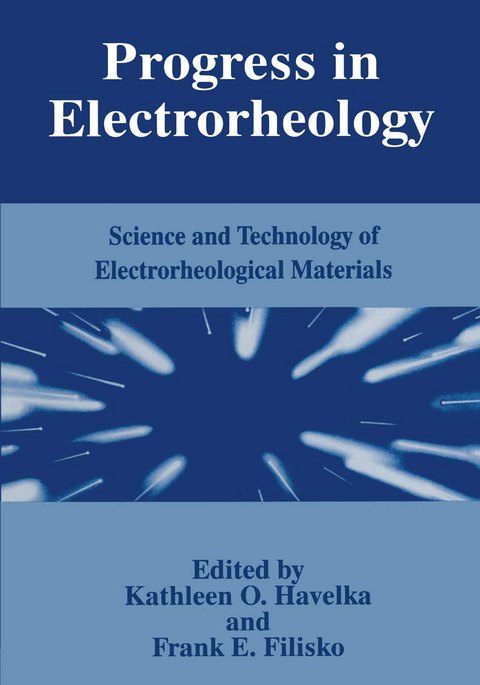
Progress in Electrorheology
Springer-Verlag New York Inc.
978-1-4899-1038-7 (ISBN)
The Evolution of ER from Discovery to Application (a special historical note).- Overview of ER Technology.- General Considerations.- Recent Developments of ER Fluids.- Novel Materials for Electrorheological Fluids.- Electrical Properties and the Strength of Electrorheological (ER) Fluids.- Conduction Processes in Electrorheological Fluids.- Electrostatic Forces in Electrorheological Fluids.- Materials.- Surface-Activated Electrorheological Suspensions.- Poly(ortho-toluidine hydrochloride) and Poly(aniline hydrochloride) as Semi-Conducting Polymers for Electrorheology Substrates.- Anhydrous Electrorheological Fluid Using Carbonaceous Particulate as Dispersed Phase.- Properties of Electrorheological Fluids Containing Numerously Sulfonated Polymer Particles.- Preceramic Polymer Routes to Amorphous and Crystalline Aluminosilicate Powders for Electrorheological Applications. I..- Electrorheological Properties of Polyaniline Dispersions: Effects of Acid Dopant Concentration.- Electrorheological-Fluids Based on Polyurethane Dispersions: Structure and Properties.- Mechanisms.- The Impact of Crystalline Phase Morphology on the Water-Promoted Electrorheological Effect of Polysaccharides.- Electrorheological Fluid Inks: A Rainbow of Possibilities.- Effect of Cation Concentration on Electrorheological Activity of Amorphous Alumino-Silicates.- High Field Conduction of Liquids in Contact with Polymeric Material with Reference to Electrorheological Fluids.- Structure Evolution of Ferrofluid Emulsions.- The Depenence of Shear Stress and Current Density on Temperature and Field for Model Electrorheological Fluids.- Mechanics.- ER Effect on the Normal Stress and Induced Network Structure of Liquid Crystal Polymer.- Strain Dependence of Dynamic Viscoelastic Properties of ER Fluids with Iron (III) Hydroxide Coated Silica Particles.- Transient Stresses in Electrorheological Fluids: Role of Particle Polarization Dynamics.- Requirements and Targets for Electrorheological Fluids in Electrically Flexible High Speed Power Transmissions.- Effects of DC and AC Electric Fields on the Response of Electrorheological Fluids Comprising Cylindrical PBZT Particles.- Models.- Structure Formation in Electrorheological Fluids.- Relations of High-Field Non-Linear Dielectric Properties and Electrorheological Effects.- Asymmetrical Polarization of Spherical Colloidal Particle Double Layer in Electric Fields.- The Potential Energy of a Pair of Polystyrene Spheres in Alternating Electric Fields.
| Zusatzinfo | IX, 372 p. |
|---|---|
| Verlagsort | New York |
| Sprache | englisch |
| Maße | 178 x 254 mm |
| Themenwelt | Naturwissenschaften ► Chemie ► Anorganische Chemie |
| Naturwissenschaften ► Chemie ► Organische Chemie | |
| Naturwissenschaften ► Chemie ► Physikalische Chemie | |
| Technik ► Maschinenbau | |
| ISBN-10 | 1-4899-1038-7 / 1489910387 |
| ISBN-13 | 978-1-4899-1038-7 / 9781489910387 |
| Zustand | Neuware |
| Haben Sie eine Frage zum Produkt? |
aus dem Bereich


